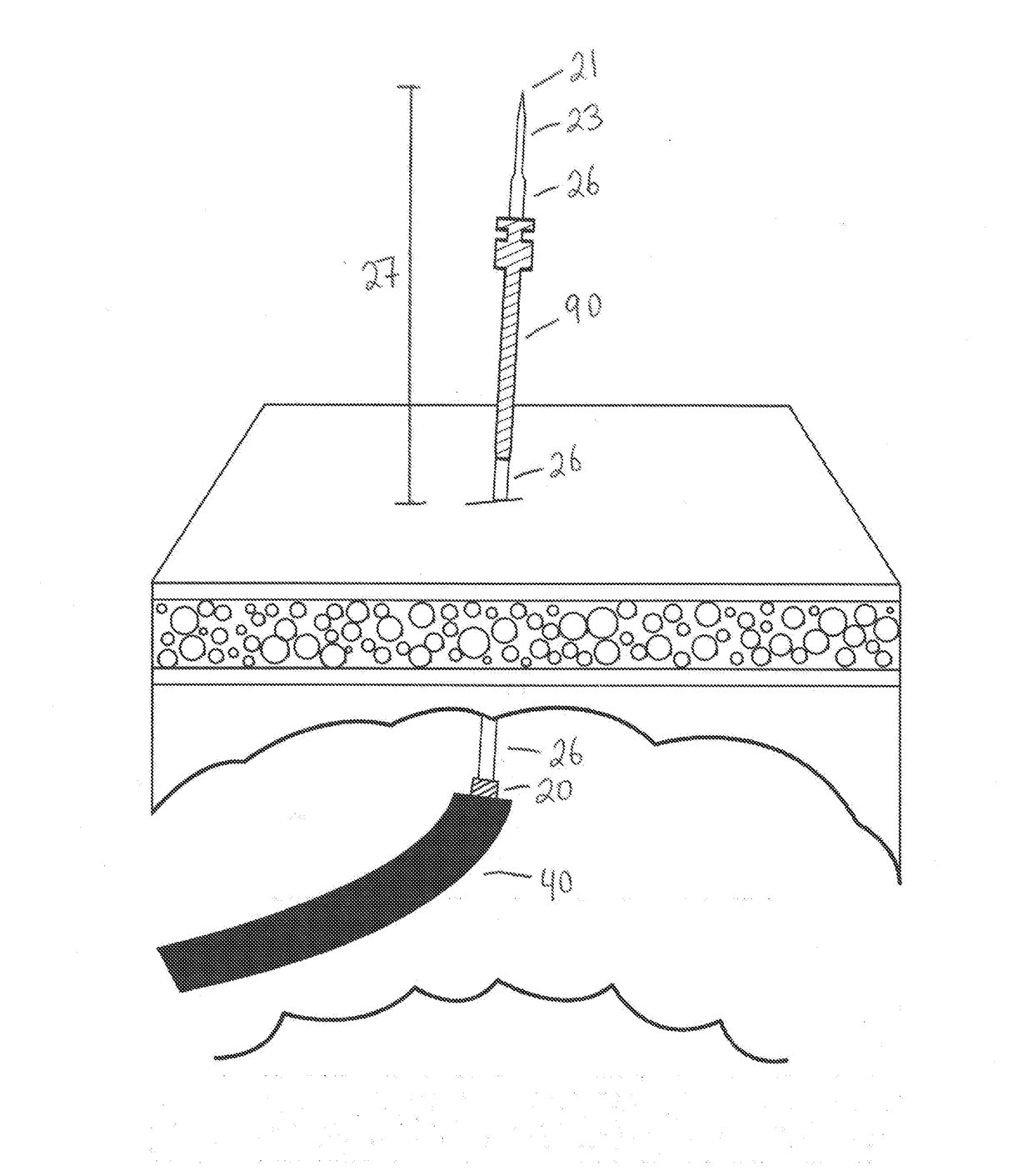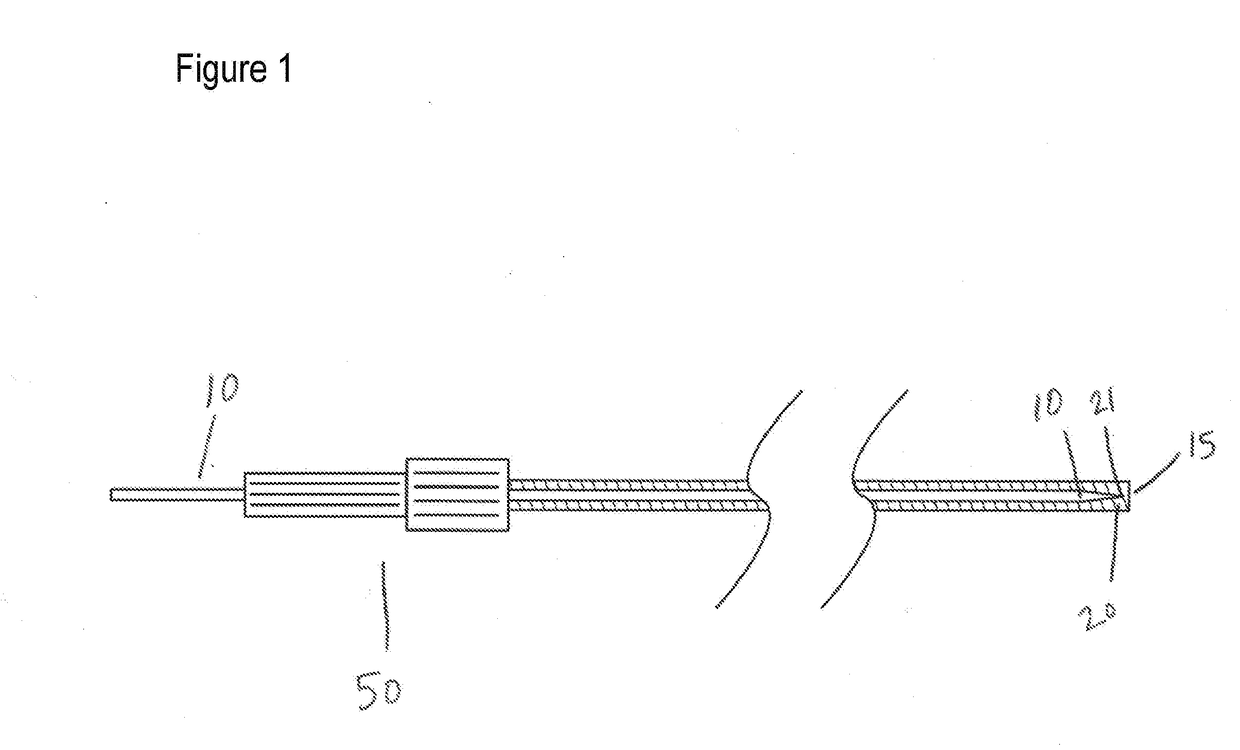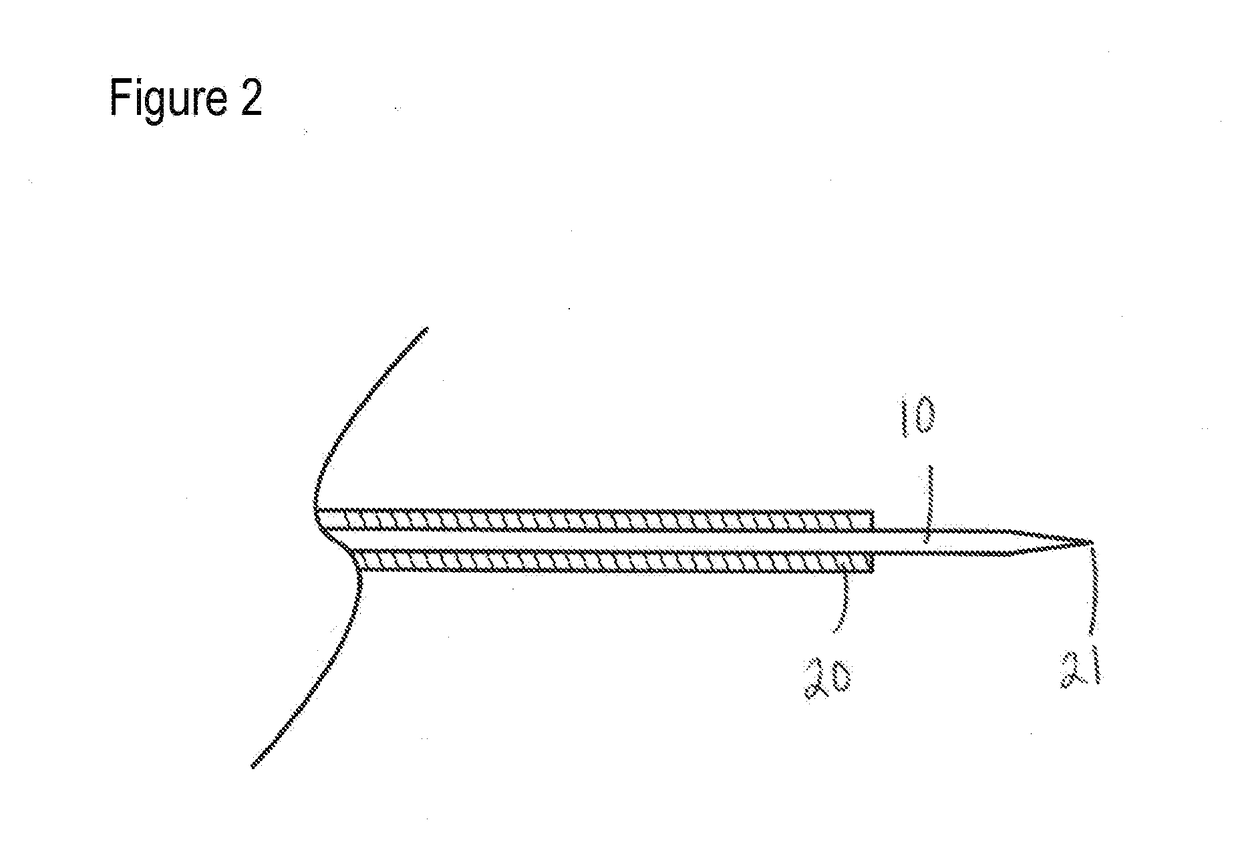Percutaneous Gastrointestinal Access System and Method
a percutaneous gastrointestinal access and gastrointestinal catheter technology, applied in the field of percutaneous gastrointestinal catheterization system, can solve the problems of pain, viscera, increased risk of infection, difficult to achieve precise targeting of the target viscera, etc., and achieve the effect of optimizing the delivery out of the abdominal wall and reducing the stiffness or kink resistan
- Summary
- Abstract
- Description
- Claims
- Application Information
AI Technical Summary
Benefits of technology
Problems solved by technology
Method used
Image
Examples
Embodiment Construction
[0089]Referring now in detail to the drawings wherein like reference numerals identify similar or like components throughout the several views, FIGS. 1-21 illustrate various embodiments of the present invention. The present invention provides percutaneous access to the gastrointestinal system, with various ways to position a catheter subsequent to puncture.
[0090]A puncture wire is advanced through a working channel of a gastrointestinal endoscope which has been passed into the gastrointestinal system in a retrograde fashion through the mouth or anus to the target viscera puncture site. This technique obviates the need for antegrade access to the target viscera as antegrade access disadvantageously requires a less precise, estimated puncture direction into target the viscera with the risk of missing the target viscera, causing bleeding, possibly requiring use of extra devices to secure the access e.g., snare device, suture anchors, etc. The retrograde approach of the present inventio...
PUM
 Login to View More
Login to View More Abstract
Description
Claims
Application Information
 Login to View More
Login to View More - R&D
- Intellectual Property
- Life Sciences
- Materials
- Tech Scout
- Unparalleled Data Quality
- Higher Quality Content
- 60% Fewer Hallucinations
Browse by: Latest US Patents, China's latest patents, Technical Efficacy Thesaurus, Application Domain, Technology Topic, Popular Technical Reports.
© 2025 PatSnap. All rights reserved.Legal|Privacy policy|Modern Slavery Act Transparency Statement|Sitemap|About US| Contact US: help@patsnap.com



